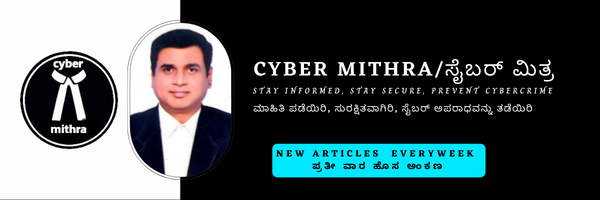CyberGrooming cyber crime : What you need to know
Sunitha, a 9th standard student wanted to become a model and used to post her photos in social media sites like Instagram. She get a friend request from 18 year old handsome Rahul, which she accepted and they become friends online very soon. Rahul started sharing his (fake)modeling photos and praised and encouraged Sunitha to post some of hers and promised to help her become a model. Gradually he started sending his nude pictures and videos and encouraged Sunitha to do the same in response. To Sunitha’s shock what started as a fun was used to blackmail her and make her to do tasks like sending money, sharing her parents financial details like credit & debit card details & personally sensitive information to Rahul. Sunitha was a victim of cybergrooming.
Cyber grooming is when someone (often an adult) befriends a child online and builds an emotional connection with future intentions of physical or online sexual abuse, sexual exploitation or trafficking and getting sensitive information. The main goals of cyber grooming are: to gain trust from the child, to obtain intimate and personal data from the child (often sexual in nature—such as sexual conversations, pictures, or videos) in order to threaten and blackmail for further inappropriate material.
To prevent cyber grooming, precautions you can take :-
- Talk to your children about the dangers of talking to strangers online and encourage them to come to you first if they feel unsafe.
- Set guidelines for your child’s internet use, such as when they can use the internet and for how long, and make sure they understand the importance of not sharing personal information online.
- Use parental control software to monitor your child’s internet use and limit their access to inappropriate content.
- Educate your child on how to identify and report suspicious messages, images, or online interactions.
- Make sure your child knows not to meet someone in person that they’ve only talked to online without informing you.
- Be aware that grooming can happen on any platform, not only social media sites, but also gaming, messaging or dating apps.
If your child is a victim of CyberGrooming fraud :-
Immediately file a complaint by contacting Cyber Helpline number 1930 or on their website www.cybercrime.gov.in or visit a child crime specific police station and file a FIR and take their advice. Block that user, but take a backup of all the conversations and any other incrementing details as they will be needed as evidence for convicting the culprit. Comfort your child or the victim and if needed take the help of therapist’s to work through the mental and emotional effects.
Remedies available to the victim legally in India :-
You can register a criminal case at your nearest cyber or children specific or regular police station, under the following legal sections or the Act as per sections prescribed by the police based on your case :
- Indian Penal Code (IPC) section 292 (distribution or circulation of obscene material), section 354 (criminal force or assault on a woman with an intent to insult her and outrage her modesty), section 354A-D(Sexual harassment and punishment), section 406 (punishment for criminal breach), section 419 (punishment for cheating by impersonation), section 420 (cheating and dishonestly inducing delivery of property), section 424 (Unlawful extraction of data), Section 441 (Criminal Trespass), Section 499 (Defamation), Section 500 (Punishment for defamation), Section 503 (Threats to injure the reputation of a person), Section 507 (Criminal intimidation), Section 509 (Insult to privacy and modesty).
- Information Technology Act 2000/08, Section 43 (Penalty and compensation for damage to computer, computer system, etc.), Section 66 (Punishment for computer related offenses – theft of data, transmission of virus to system, destruction of data, hacking or access to computer or network to a authorized person), Section 66C (Penalty for identity theft and fraudulent or dishonest use of identity information), Section 66D (Punishment for impersonation fraud using computer resources), section 66E (violation of privacy), section 67 (publishing or transmission of obscene and sexual content over an electronic medium), section 67A (publication of obscene material in electronic form).
- Various sections under Indecent Representation of Women (Prohibition) Act, 1986 and The Protection of Children from Sexual Offences Act, 2012


I do agree with all the ideas you have introduced on your post. They are very convincing and will definitely work. Still, the posts are very short for newbies. May just you please prolong them a little from subsequent time? Thank you for the post.
Thanks for your feedback. I agree that it is not very exhaustive, but considering the reduced attention span of readers, I have kept it within 800 words. Happy to create one more article on any specific topic if you want more details here or a part two of the same.
Fantastic beat ! I would like to apprentice while you amend your web site, how could i subscribe for a blog site? The account helped me a acceptable deal. I had been a little bit acquainted of this your broadcast offered bright clear concept
Can you be more specific about the content of your article? After reading it, I still have some doubts. Hope you can help me.
Happy to answer your doubts, please share them and if it adds value to the article then will gladly update my article